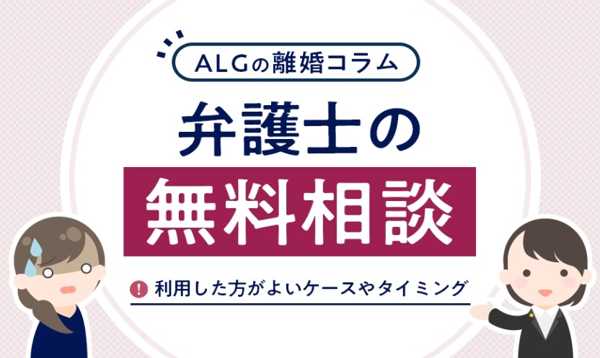【不倫調査のプロが解説】費用・方法・証拠の取り方を徹底解説!
Thyroid Eye Disease: Exploring Symptoms, Treatment Options, and Life With TED
Thyroid Eye Disease (TED), also known as Graves' orbitopathy, is a rare autoimmune condition that affects the eyes and surrounding tissues. It is commonly associated with thyroid disorders, particularly hyperthyroidism and Graves' disease. TED can lead to eye discomfort, vision disturbances, and in severe cases, disfigurement. Early recognition and timely intervention are crucial to prevent long-term complications and improve the quality of life for those affected.
Thyroid Eye Disease (TED), also known as Graves' orbitopathy, is a rare autoimmune condition that affects the eyes and surrounding tissues. It is commonly associated with thyroid disorders, particularly hyperthyroidism and Graves' disease. TED can lead to eye discomfort, vision disturbances, and in severe cases, disfigurement. Early recognition and timely intervention are crucial to prevent long-term complications and improve the quality of life for those affected.

What Is Thyroid Eye Disease?
TED occurs when the immune system mistakenly attacks the tissues and muscles around the eyes. This inflammation leads to swelling, redness, and increased pressure in the eye socket, which can cause the eyes to protrude and lead to a range of other troubling symptoms. Though TED is most frequently seen in patients with hyperthyroidism, it can also occur in people with normal thyroid function or hypothyroidism.
The condition often develops in individuals between the ages of 30 and 60, and women are more likely than men to experience TED. The disease can progress in stages, starting with mild symptoms and potentially leading to more severe complications if left untreated.
Common Symptoms of Thyroid Eye Disease
The symptoms of TED vary significantly from person to person, and while some may experience mild discomfort, others can face life-altering changes to their vision and appearance. The following are some common signs to watch for:
Protruding Eyes (Exophthalmos): One of the hallmark symptoms of TED is the protrusion of the eyes, often making them appear larger or more prominent. This occurs due to inflammation behind the eyes, causing them to push forward. As a result, individuals may have difficulty closing their eyes completely, which can lead to dryness and irritation.
Eyelid Retraction: TED can cause the eyelids to pull back, resulting in a wide-eyed or "staring" appearance. This can contribute to discomfort, as well as make it more difficult for people to blink properly.
Double Vision (Diplopia): When the muscles that control eye movement become inflamed, it can cause the eyes to become misaligned, leading to double vision. This can be disorienting and impact daily activities such as reading or driving.
Pain and Pressure Around the Eyes: TED often causes a sensation of pressure or pain behind the eyes, especially when moving them. This can be exacerbated by light sensitivity, which is another common symptom of the disease.
Swelling and Redness: Inflammation around the eyes can lead to visible swelling in the eyelids and the tissues surrounding the eyes. This swelling may cause the eyes to appear more prominent, further contributing to an altered facial appearance.
Risk Factors for Thyroid Eye Disease
While TED is most often linked to thyroid disorders, particularly hyperthyroidism, other factors can increase the risk of developing the disease. Some of the key risk factors include:
Thyroid Disorders: TED is most strongly associated with Graves' disease, an autoimmune condition that leads to hyperthyroidism. However, TED can also occur in people with other thyroid disorders, such as Hashimoto's disease or even those with normal thyroid function.
Smoking: Smoking is one of the most significant modifiable risk factors for TED. Research has shown that smokers are more likely to develop TED and experience more severe symptoms. Smoking also reduces the effectiveness of treatments.
Age and Gender: TED typically affects people between the ages of 30 and 60, and it is more common in women. However, men can also develop the disease, and TED may present differently in men than in women.
Genetics: A family history of thyroid disorders or TED increases the risk of developing the disease. Genetic factors can contribute to how the immune system responds to thyroid conditions.
Poorly Managed Thyroid Function: Inadequate treatment or poorly controlled thyroid hormone levels—whether too high or too low—can increase the likelihood of developing TED.
Treatment Options for Thyroid Eye Disease
TED treatment varies based on the severity of the condition. The goal is to reduce inflammation, relieve symptoms, and prevent complications such as vision loss. Below are the main treatment options available for TED:
Tepezza (Teprotumumab): Tepezza is the first FDA-approved medication specifically designed to treat TED. It targets the underlying inflammation that causes TED symptoms. Tepezza has been shown to significantly improve both the appearance of the eyes and the discomfort associated with the disease, including reducing bulging eyes and double vision.
Corticosteroids: Steroid medications like prednisone can help reduce inflammation in the early stages of TED or during flare-ups. Corticosteroids may be used for short-term management but are typically not recommended for long-term use due to their potential side effects.
Surgical Interventions: In more severe cases, surgery may be necessary to correct the structural issues caused by TED. Orbital decompression surgery involves removing bone or tissue from the eye socket to relieve pressure on the eyes and improve their alignment. This procedure can also help reduce the risk of vision loss in advanced cases.
Radiation Therapy: For patients with moderate to severe TED who do not respond well to other treatments, radiation therapy can help reduce inflammation and prevent further damage to the eye muscles.
Supportive Treatments: For those with mild TED, using lubricating eye drops, wearing sunglasses to protect against light sensitivity, and using artificial tears can help manage symptoms. Proper eyelid care and avoiding irritants are also crucial in reducing discomfort.
Coping With Thyroid Eye Disease
While TED can be challenging, there are many strategies to cope with the disease and improve overall quality of life. Here are some helpful tips:
Connect With Others: Joining a support group or connecting with others who have TED can provide emotional support and practical advice. Sharing experiences with people who understand can make living with the disease easier.
Regular Monitoring: Regular check-ups with an ophthalmologist and an endocrinologist are essential to monitor the progression of TED and ensure appropriate management of thyroid health.
Manage Stress: Stress can exacerbate TED symptoms, so incorporating stress-reducing activities like yoga, deep-breathing exercises, or mindfulness can help mitigate flare-ups.
Protect Your Eyes: Since TED can cause dry eyes and sensitivity to light, using lubricating eye drops and wearing protective sunglasses can help alleviate discomfort and protect the eyes from environmental irritants.
Conclusion: Living Well With Thyroid Eye Disease
Thyroid Eye Disease is a manageable condition, but it requires timely diagnosis and comprehensive treatment to avoid long-term complications. With advancements in medication like Tepezza, surgery, and other therapeutic approaches, individuals with TED have more treatment options than ever before. Through early intervention, consistent care, and lifestyle adjustments, it is possible to live a fulfilling life even with TED.
If you suspect you have TED, especially if you have a thyroid disorder, it's important to seek advice from a healthcare provider. A combination of medical treatment and proactive self-care can help minimize the impact of TED and help you maintain your well-being.











